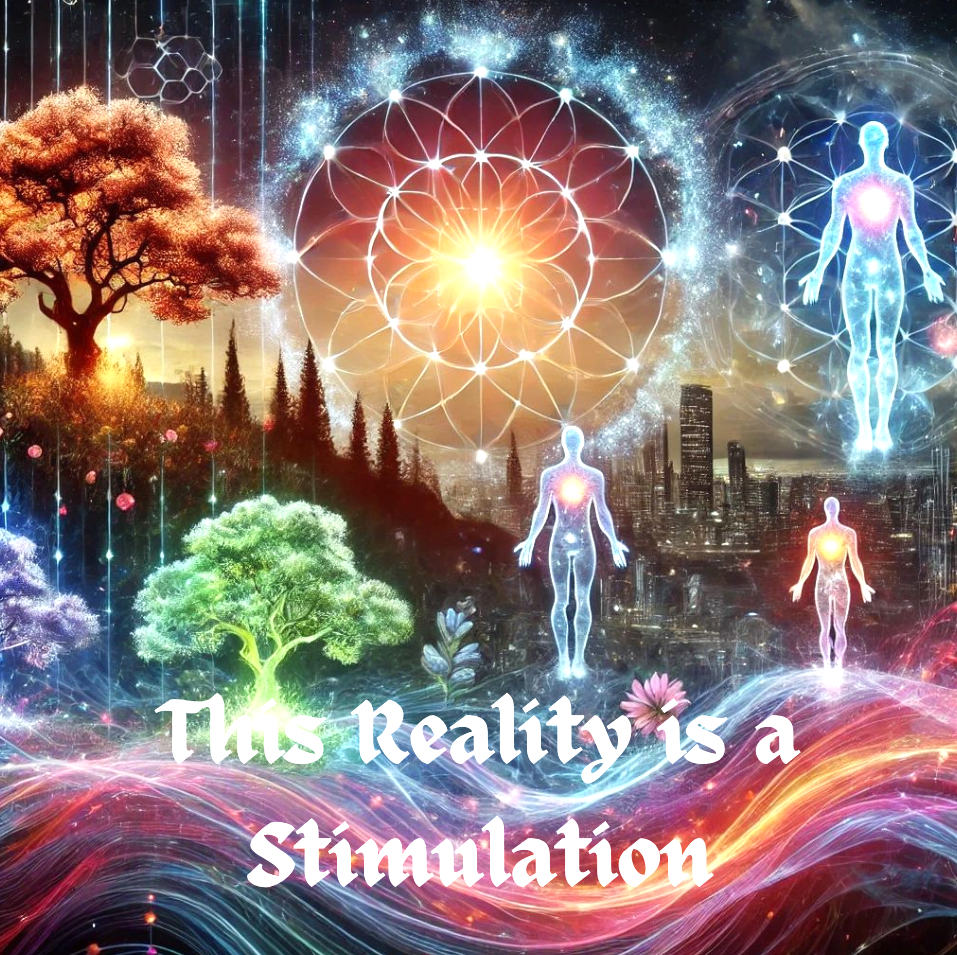In essence, the participatory nature of consciousness — the idea that reality is not a fixed film we merely watch, but an ever-evolving production in which our attention, emotion, and storylines act as both camera and script.
Let’s unpack it in a way that stays grounded yet keeps its visionary heart.
1. “This reality is a stimulation.”
You could say that experience itself is an interface, not a deception.
Our senses, beliefs, and emotions generate an immersive simulation that translates infinite information into something the human nervous system can navigate.
So rather than thinking life is fake, it may be more helpful to see it as responsive — a co-creative feedback loop between perception and environment.
Actionable Steps to Create New Reality:
Notice each morning that you awaken inside a story you are already authoring.
Ask: “What genre am I filming today — tragedy, comedy, discovery?”
Then let small choices (tone of speech, posture, breath) direct the day’s scene toward coherence.
2. “Based on movie, music, storylines, and emotion”
Art and emotion are instruction sets for consciousness.
Every melody, scene, and myth is a language of vibration; the nervous system translates these vibrations into lived feeling.
Fear tightens the lens, narrowing possible outcomes; love and joy widen it, revealing more creative angles of the same scene.
Practice:
Curate your daily soundtrack. Ask: Does this music expand or contract my chest?
Watch one story each week that models compassion rather than domination.
After any strong emotional scene (real or fictional), pause and breathe until the feeling becomes data, not identity.
3. “What we give energy to, we stimulate”
This is the principle of attentional causality.
Energy follows attention; attention shapes perception; perception guides behavior; behavior sculpts the world.
What you repeat in imagination and emotion becomes statistically more likely to manifest in circumstance — not because physics bends to wishful thinking, but because you begin to notice, choose, and act in ways that harmonize with the narrative you expect.
Practical exercise:
Each night, replay the day like a film editor.
Highlight the scenes that felt most aligned with love or creativity.
Re-shoot (in imagination) any moment you wish to experience differently tomorrow.
Wake and act from that revised script.
4. “Our Collective Shift”
If enough people practice conscious authorship, the shared narrative — culture — evolves.
The shift isn’t forced; it emerges when individual nervous systems entrain to coherence.
So the mission is not to convert others, but to model reality as an art form: embodied kindness, clear language, and creative problem-solving become contagious.
Community practice:
Begin gatherings with two minutes of synchronized breathing or gentle humming.
Speak in stories of possibility rather than catastrophe.
End discussions with one actionable kindness for the outer world — something measurable and practical.
5. Integrative understanding
Reality is not a movie about you; it is a movie through you.
When fear directs the camera, life feels like survival.
When love directs, life becomes revelation.
Neither is wrong — both are data in the grand experiment of consciousness learning to see itself.
Closing reflection
Take a breath, feel the body as the projector through which this light passes.
Ask quietly: What story do I wish to amplify with today’s energy?
Then live that answer in the smallest gesture — a smile, a pause, a truthful word.
If this reflection stirs emotion, breathe once for stillness.
What you energize will, indeed, become your next scene
